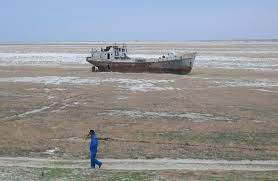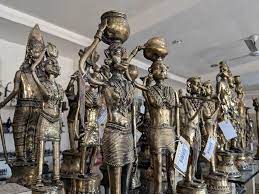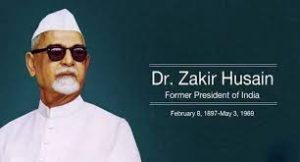Today’s Current Affairs: 12th Feb 2024 for UPSC IAS exams, State PSC exams, SSC CGL, State SSC, RRB, Railways, Banking Exam & IBPS, etc
Table of Contents
Fund Of Funds Scheme:

According to a Crisil assessment called Prabhaav, the Fund of Funds for Startups (FFS) scheme has enabled investments to the tune of around 4x of the amount drawn with Rs 17,534 crore invested in 938 startups.
- The Fund of Funds for Startups (FFS) Scheme was approved and established in 2016 with a corpus of Rs 10,000 crore,
- Under FFS, the Scheme does not directly invest in startups, instead provides capital to SEBI-registered AIFs, known as daughter funds, who in turn invest money in growing Indian startups through equity and equity-linked instruments.
- Small Industries Development Bank of India (SIDBI) has been given the mandate of operating this Fund through selection of suitable daughter funds and overseeing the disbursal of committed capital.
- AIFs supported under FFS are required to invest at least 2 times of the amount committed under FFS in startups.
Aral Sea : Study

NASA’s Earth Observatory posted a detailed analysis of the reason behind Aral Sea’s disappearance.
- Aral Sea stands at the boundary between Kazakhstan to the north and Uzbekistan to the south.
- It was once a large saltwater lake of Central Asia and the world’s fourth largest body of inland water.
- The remnants of it nestle in the climatically inhospitable heart of Central Asia, to the east of the Caspian Sea.
- The Aral Sea depression was formed toward the end of the Neogene Period
- It was made by waters from the Syr Darya and the Amu Darya rivers that were dependent on glacial melt.
- It drains Uzbekistan and portions of Kazakhstan, Tajikistan, Afghanistan, Turkmenistan, Iran, and Kyrgyzstan.
- The Aral Sea is located within the harsh climate region of Central Asia.
- The area experiences a desert-continental climate, characterised by hot summers, cold winters, and varying diurnal air temperature.
Dhokra Shilpkala:

Chhattisgarh’s Ocher Studio is helping to preserve India’s 4,000-year-old craft- Dhokra Shilpkala
- Dhokra Shilpkala is believed to be derived from the Dhokra Damar tribes, who are the traditional metal smiths of Central India.
- The origins of Dhokra Shilpkala can be traced back to the tribal communities residing in the regions of Chhattisgarh, Jharkhand, West Bengal, and Odisha, where it evolved as an integral part of their cultural and religious practices.
- It uses echnique of metal casting, which involves using the lost wax casting method, also known as cire perdue.
- Its design has rustic charm and the organic nature of its designs.
- Artisans draw inspiration from nature, mythology, and everyday life, incorporating motifs such as animals, birds, deities, and tribal symbols into their creations.
- From miniature figurines and jewellery to larger-than-life sculptures and functional objects, Dhokra Shilpkala encompasses a wide range of artistic expressions.
Frozen Smoke : Discovery

Researchers have developed a sensor made from “frozen smoke” that uses artificial intelligence techniques to detect formaldehyde in real time at concentrations as low as eight parts per billion, far beyond the sensitivity of most indoor air quality sensors.
- The frozen smoke, technically known as aerogel, is an extraordinary material.
- It was originally developed in the 1930s.
- The name aerogel comes from the combination of the Greek word “aero”, meaning air, and “gel”, since aerogels are derived from gels.
- It is hailed as a miracle material.
- Aerogel can claim a low density, high thermal resistivity and a highly porous structure.
- The texture of aerogel is similar to a fine, dry sponge, but feels much lighter
- When pressed softly, aerogel will return to its original form, but when pressed harder, a dimple forms.
- Put aerogel under too much pressure, however, and it will shatter like glass into many tiny pieces.
- They are composed mostly of air and can be used to remove contaminants.
Sovereign Gold Bond (SGB) Scheme : Next Price Fixed

The issue price of the next tranche of Sovereign Gold Bond has been fixed at Rs 6,263 per gram, the Reserve Bank said in a statement recently.
- Sovereign Gold Bond (SGB) Scheme are government securities denominated in grams of gold.
- The SGB Scheme was first launched by the Government of India (GOI) on October 30, 2015.
- They are substitutes for holding physical gold. Investors have to pay the issue price, and the bonds will be redeemed upon maturity.
- The bond is issued by the Reserve Bank on behalf of the GOI.
- The bonds will be restricted for sale to resident Indian entities, including individuals (in their capacity as individuals, or on behalf of the minor child, or jointly with any other individual), Hindu Undivided Family (HUF), Trusts, Universities and Charitable Institutions.
- The bonds are issued in denominations of one gram of gold and in multiples thereof.
- The minimum investment in the bond shall be one gram, with a maximum subscription limit of 4 kg for individuals, 4 kg for HUFs, and 20 kg for trusts and similar entities notified by the government from time to time per fiscal year.
- In the case of joint holding, the investment limit of 4 KG will be applied to the first applicant only.
- The tenor of the bond will be for a period of 8 years, with an exit option in the 5th, 6th, and 7th years, to be exercised on the interest payment dates.
2024 Climate And Catastrophe Insight Report:

The 2024 Climate and Catastrophe Insight report has been published by a risk-mitigation service provider Aon PLC, which highlighted that the year 2023 recorded significant damages due to Natural Disasters.
- Aon plc is a leading provider of advice and solutions for commercial, reinsurance, retirement, health, and data & analytic services in over 120 countries and sovereignties.
Highlights of the Report
- In 2023, the world witnessed 398 notable natural disasters, resulting in a staggering USD 380 billion in economic losses.
- These losses surpassed the estimated economic loss in 2022 and marked the hottest year on record, underscoring the urgent need for better disaster preparedness, risk reduction, and increased resilience.
- 95% of the natural disasters (that occurred in 2023) causing damages exceeding USD 1 billion were attributed to Weather-related factors.
- Insurance only paid out USD 118 billion, or 31%, of the total damages incurred indicating a significant “protection gap” of approximately 69% as opposed to 58% in 2022.
- The majority of disaster losses were covered in the US, whereas most of the losses in three other regions — Americas (Non-US), Europe, Middle East and Africa (EMEA) and Asia and Pacific (APAC) — were uninsured.
- Hurricane Otis occurred in Mexico’s southern Pacific coast, stood out as the costliest individual event.
- Drought impacted several regions in South America.
- Europe, Middle East, and Africa (EMEA) region faced USD 150 billion in economic losses due to natural catastrophes, driven by devastating earthquakes.
- The Turkey and Syria earthquake had a significant impact.
- Asia and Pacific economic losses hit USD 65 billion with a protection gap of 91% as insurance losses reached USD 6 billion.
- Flooding events resulted in USD 1.4 billion of insured losses in China and USD 1.3 billion in New Zealand.
- A multi-week-long heatwave impacted many countries in South and Southeastern Asia.
Dr. Zakir Hussain Birth Anniversary:

The President of India, paid floral tributes to Dr. Zakir Hussain, former President of India on his birth anniversary at Rashtrapati Bhavan.
- Dr. Zakir Husain (08 Feb 1897- 03 May 1969) was an Indian statesman, and the first Muslim to hold the position of President of India in 1967.
- He was also appointed governor of Bihar state in 1957 and was elected vice-president of India in 1962.
- He helped found the Muslim National University in Aligarh and served as its vice-chancellor from 1926 to 1948.
- He also became chairman of the National Committee on Basic Education, established in 1937 to design a Gandhian syllabus for schools.
Results Of The Annual Survey Of Industries:

The Ministry of Statistics and Programme Implementation (MoSPI) released the results of the Annual Survey of Industries (ASI) for the reference periods of 2020-21 and 2021-22 referred to as ASI 2020-21 and ASI 2021-22.
Highlights :
- Growth in Gross Value Added grew by 8.8% in the year 2020-21 over 2019-20, primarily due to a sharp fall in input (4.1%) that offset an output contraction (1.9%) during the pandemic.
- In 2021-22, GVA surged significantly by 26.6% over the previous year, riding on high growth in industrial output, which expanded by more than 35% in value terms.
- The year 2021-22 witnessed a sharp rise in level as well as in the growth of the majority of the important economic parameters like invested capital, input, output, GVA, net income and net profit registered by the sector and even surpassed the pre-pandemic level in absolute value terms.
- Industries such as Manufacture of Basic Metal, Coke & Refined Petroleum Products, Pharmaceutical Products, Motor vehicles, Food Products, and Chemical and Chemical products emerged as major drivers of growth.
- Together, these industries contributed about 56% of the total GVA of the sector, with a GVA growth of 34.4% and output growth of 37.5% compared to 2020-21.
- Gujarat remained at the top in terms of GVA in 2020-21 and second in 2021-22, while Maharashtra ranked first in 2021-22 and second in 2020-21.
- Tamil Nadu, Karnataka, and Uttar Pradesh consistently maintained their positions among the top five states contributing to manufacturing GVA.
- Despite a marginal fall in employment in 2020-21 due to the pandemic, 2021-22 saw robust growth of 7.0% year-on-year in total estimated employment in the sector.
- The estimated number of persons engaged in the sector in 2021-22 exceeded pre-pandemic levels by more than 9.35 lakh, with the average salary per employee registering an increase of 1.7% in 2020-21 and by 8.3% in 2021-22 in comparison to respective previous years.
- Tamil Nadu, Gujarat, Maharashtra, Uttar Pradesh, and Haryana emerged as the top five states employing the highest number of persons in the manufacturing sector in both 2020-21 and 2021-22.
- Together, these states contributed about 54% of total manufacturing employment in both years.
Kyasanur Forest Disease : Viral Infection

Two people have died due to Kyasanur Forest Disease (KFD), a viral infection, in Karnataka.
- According to the health department, the first fatality due to monkey fever was reported in Shivamogga district on 8 January wherein an 18-year-old succumbed to the virus.
- The second fatality was reported at Manipal in Udupi district when a 79-year-old man died in a private hospital.
- Kyasanur Forest Disease (KFD) also known as monkey fever, is a tick-borne viral haemorrhagic fever endemic to the southwestern part of India.
- KFD is caused by the Kyasanur Forest disease virus (KFDV), a member of the Flaviviridae virus family.
- Hard ticks (Haemaphysalis spinigera) serve as the reservoir for KFDV. Once infected, ticks remain carriers for life.
- Rodents, shrews, and monkeys become common hosts for KFDV after being bitten by an infected tick.
- Humans can contract KFD through tick bites or contact with infected animals.
- According to the US Centers for Disease Control and Prevention (CDC), the disease was first identified in 1957 when it was isolated from a sick monkey from the Kyasanur Forest in Karnataka
- There is no specific treatment for KFD, but early hospitalization and supportive therapy is important.
- A vaccine exists for KFD and is used in endemic areas of India
Inheritance Tax : Oxfam Report

Oxfam report says that 70% of countries dont have any form of inheritance tax on wealth.
- The report comes on the backdrop of increased inequalities in income, wealth and possession of resources.
- Inheritance tax that was levied against a particular asset during the time of its inheritance.
- It comes under direct tax and a person can receive inheritance either under a will or under the personal law of the deceased.
- The Inheritance or Estate Tax was abolished with effect from 1985.
- In India, the concept of levying tax on inheritance does not exist now.
- In the event of the death of an individual, properties belonging to the deceased would pass on to his legal heirs, a transfer without any consideration in return. Hence, it could qualify as a gift for income tax.
- The Income Tax Act, of 1961, specifically excludes the transfer of assets under will or inheritance from the purview of gift tax.
- The person receiving the inheritance has to pay tax on the income earned (rent, interest, etc.) in respect of the assets inherited by him once he becomes the owner of the same.
- The person has to pay capital gains tax when he sells the inherited asset.




